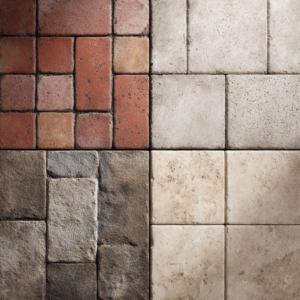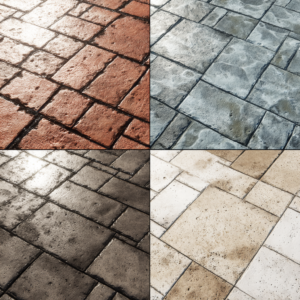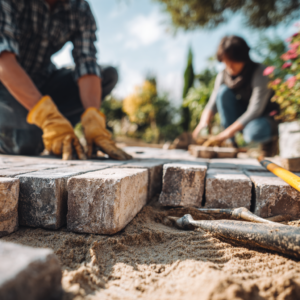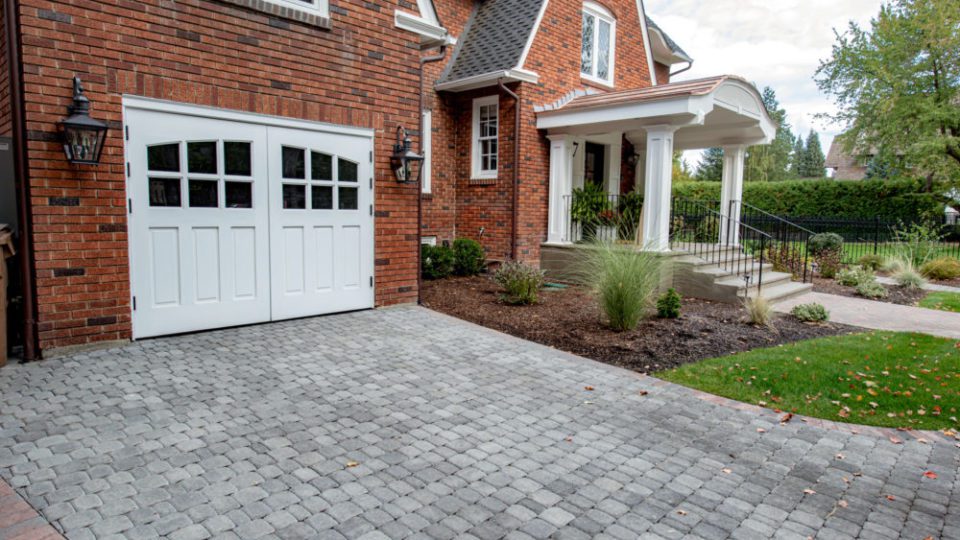
Pavers have for years been a staple of the hardscape business. And for good reason, as both their aesthetic and structural elements are unmatched. But how to choose the right paver for your project? What color pavers go with red brick houses, for example?
That question might prove more difficult to answer than what it seems at first glance. Choosing pavers is much more complex than simply going with what is more aesthetically pleasing. The right kind of material is even more important.
Pavers are not just for show. They fulfill a very specific purpose structurally and need to be treated as so. Before asking yourself what pavers you should choose for your brick house from a visual perspective, you must first consider what is going to be the use of those pavers exactly.
Knowing that will help you define what material you need, and therefore help narrow it down your possible choices. Only then you should think about how to work with the right colors according to your project.
The goal of this article is to help you with every step of this process. From start thinking about the right material you need, from color combinations and finally to the slight alterations in color that sealers can do.
So let’s get right to it, starting by talking a little about the right choice of material.
Jump to:
What Color Pavers Go With Red Brick Houses? – Think of the Material First!
We are going to assume that you don’t know exactly what we mean when we talk about materials. So let’s explain that a little better.
Paver can usually be found in four different materials: brick, concrete, natural stone and porcelain. Each one of these materials serves a specific purpose and works better in one situation or another.
For example, let’s say you want to use pavers in a poolside installation. In that case, concrete can be an excellent choice (especially if you decide to go for their permeable variation). Some forms of natural stone, like travertine, can also work great, as well as porcelain.
Brick, however, is not recommended. Brick installations are too porous for poolsides. It can easily shift and sink when submitted to water.
In another example, if you’re planning of building something that is going to receive vehicular traffic, like a driveway or garage, porcelain is the way to go. Porcelain is highly resistant and naturally non-porous, making it a perfect material for this situation.
So knowing exactly what material fits best for your installation is the first step you should take. In order to do that, maybe the best course of action is to hire a professional in the hardscape business to help you make that important choice.
Working With Colors in Pavers
Now that you know what material you need, you’ll have an idea of all the options you have available.
There are basically two ways in which you can work the colors in a hardscape project: matching and blending.
To understand the difference between them, first you need to know a little about color palettes.
There are colors that are very close to each other in the color palette, like red and orange, and other that are far apart, like blue and yellow.
Working with colors close to each other is what we call matching, while working with colors that are far apart is called blending.
Understanding that will help you a ton when defining the color of your pavers in relation to your red brick house.
Depending on the hue and the intensity of the red bricks in your house, you can do a nice and discrete matching by choosing a lighter shade of red for the pavers, or even a more beige color.
But if you want to call attention to each element separately, you can try to blend the colors by going with gray or white pavers, creating a very classic look or a more daring style using blue or green pavers.
A very common technique used in hardscape that you can follow is the “sandwich” approach. This technique consists in simply using the same color you have on the roof of your house for your pavers. Many professionals consider that a fail-safe choice.
Paver Colors and Sealing
In case you didn’t know, aside from porcelain and permeable pavers, every paver installation needs to be sealed. Sealing protects the installation against spills, stains and many weather effects.
Porcelain doesn’t need it because it is naturally non-porous and permeable pavers are designed for a different purpose that dispenses the need for sealing.
Sealers can either be topic (sealers that create a film on the surface of the pavers) and non-topic (sealers that don’t create a film on the surface and instead penetrate the pores of the pavers).
Topic sealers are the ones that can alter the color of the pavers. Some of them have a glossy finish that can create that characteristic “shinny” look that many homeowners look for.
Thinking about what sealer you will apply and what effects it can have on the color of the pavers is also something you need to look out for.
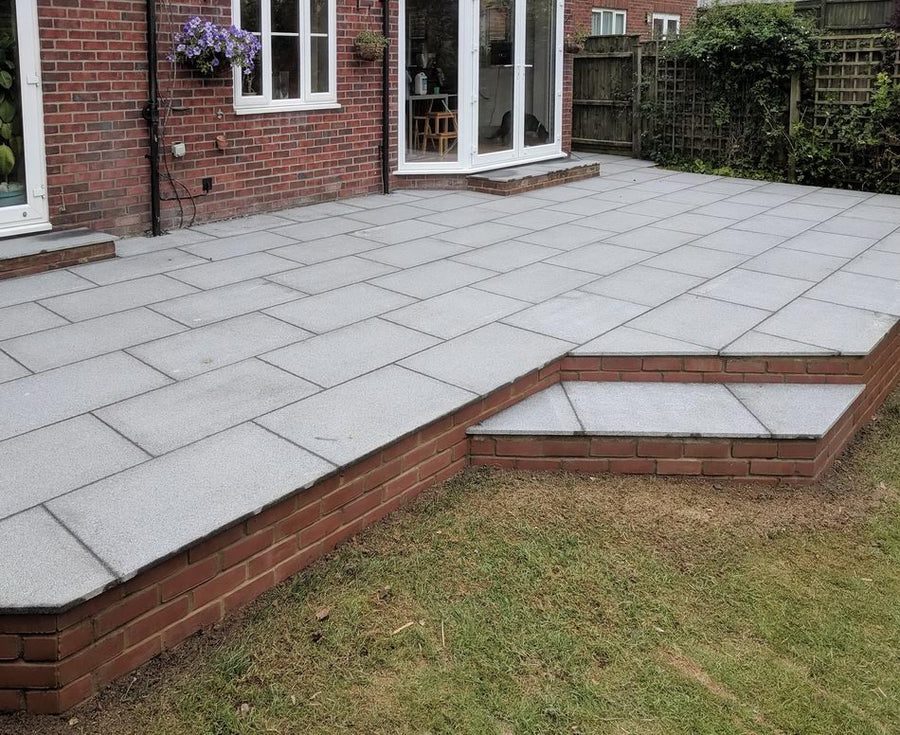
What Color Pavers Go With Red Brick Houses?
So, as you could see, choosing colors is not all there is to it when it comes to choosing pavers. The correct choice of material is even more important. Careful planning and consideration are everything when it comes to paver installations, so take your time to make the best possible choices.
We here at JS Brick have worked on countless installations during our 22 years of activity. We have seen many problems that could have been avoided if only a professional was involved during the installation.
So, we highly recommend you get in contact with a professional in your area to help you with your project. And if you happen to be in our area of activity, around the Sarasota County, in FL, why not give us a call to help you?
Contact us right now at +1 941 586 9140 or email us at [email protected]. We would be happy to hear from you and help you with any paver and hardscape need you might have.

